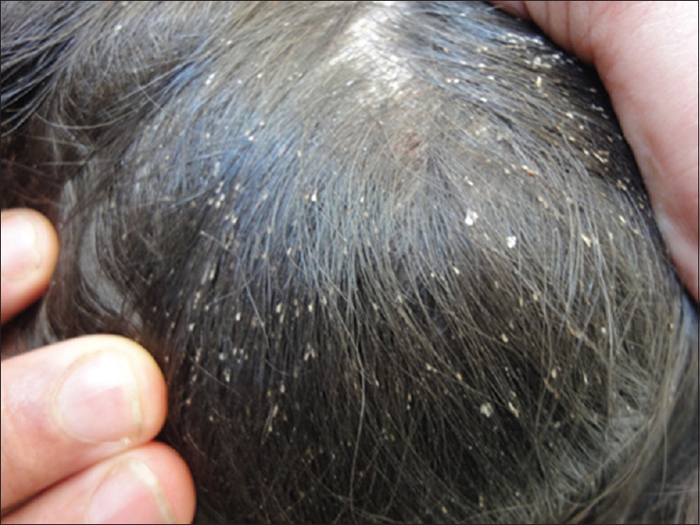
Pediculosis capitis is an infestation of the scalp by the head louse, which feeds on the scalp and neck and deposits its eggs on the hair; presence of head lice is associated with few symptoms but much consternation.
Causes of Pediculosis Capitis
Lice are insects that infest the hair. Adult lice live on the hair, and they climb down to feed on the scalp four to five times a day. Females lay about six eggs (nits) a day which they cement to the hair shaft.
Symptoms of Pediculosis Capitis
- Patients infested with head lice generally present with an itchy scalp. The back of the neck and postauricular areas are commonly involved.
- The hair can become tangled with exudates, predisposing the area to fungal infection.
- Typically it appears as red itchy bumps on the back of the neck and scalp
Diagnosis
Clinical findings, confirmed by detection of nits and/or lice.
Treatment
Contacts
All children and adults in the household should be examined. All infested individuals should be treated. Clothing, bedding, and fomites should be machine-washed. Other items (brushes, combs, pillow, mattresses, and toys) can be decontaminated with insecticidal powders.
Pediculocide Therapy See Pediculosis.
Causes of Therapeutic Failure Misunderstanding of instructions; noncompliance; inappropriate instructions on head-lice products or from health professionals; high cost of products; misdiagnosis; psychogenic itch; incomplete ovicidal activity; inappropriate preparation (e.g., shampoo); insufficient dose-time, frequency, and/or quantity of product applied; failure to retreat; reinfestation; live eggs not removed; acquired resistance to insecticides.
Removal of Nits After treatment and neutral shampoo, the hair is wet-combed with a fine-toothed comb to remove nits. Complete nit removal depends on comb structure, duration/ technique of combing, and thoroughness. Overnight application of petroleum jelly or HairClean 1-2-3 may facilitate removal of nits.
Pediculosis Palpebrarum Apply petrolatum to lashes twice daily for 8 days, followed by removal of nits, or physostigmine ophthalmic preparations applied twice daily for 1 or 2 days.
Secondary Bacterial Infection Should be treated with appropriate doses of erythromycin or dicloxacillin or cephalexin.
Prevention
Avoid contact with possibly contaminated items such as hats, headsets, clothing, towels, combs, hair brushes, bedding, upholstery. The environment should be vacuumed. Bedding, clothing, and head gear should be washed and dried on the hot cycle of a dryer. Combs and brushes should be soaked in rubbing alcohol or Lysol 2% solution for 1 h. Families should look for lice routinely. Many schools in the United States adhere to a “no-nit” policy before children can return after infestation.
References